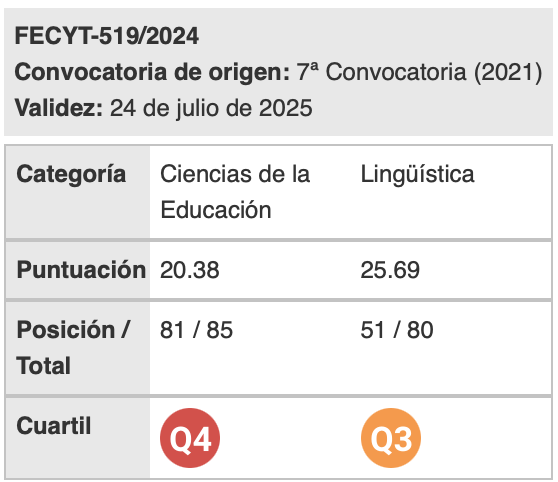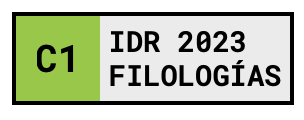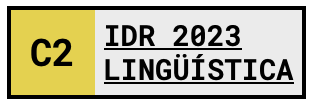Introducing the Corpus of Historical English Law Reports: Structure and compilation techniques
Keywords:
Law reports, legal English, diachronic corpus, corpus compilation.Abstract
The research group Variation, Linguistic Change and Grammaticalization from the University of Santiago de Compostela has been lately working on the compilation of a new specialised corpus of legal English: The Corpus of Historical English Law Reports (CHELAR). The corpus will contain approximately half a million words and cover the years from about 1535 to 1999. The texts included in the corpus are British English law reports: records of judicial decisions that are “cited by lawyers and judges for their use as precedent in subsequent cases” (EBO, n.d.). Except for the legal section of the forthcoming ARCHER corpus version 3.2 (A Representative Corpus of Historical English Registers), none of the existing corpora of English at present includes law reports. This is precisely what makes the CHELAR corpus different from other synchronic and diachronic corpora of legal English. Once completed, the Corpus of Historical English Law Reports will, therefore, constitute a new, useful resource for linguists with an interest in legal language, from both a synchronic and a diachronic perspective.
Downloads
References
Abbyy FineReader (version 10) [Software]. Available from: <https://store.abbyyeu.com/cgi-bin/shop/ml=EN/curr=EUR?ID=FR10PE E&clps=1&APX=CJSPRING2011&PROMO=SPRING2011>
Atkins, S., Clear, J. & Ostler, N. (2007). Corpus design criteria. In W. Teubert & R. Krishnamurthy (Eds.), Corpus linguistics: Critical concepts in linguistics, Vol. II (99-133). London & New York: Routledge.
Barber, C. (1976). Early Modern English. London: André Deutsch.
Biber, D. & Finegan, E. (1990–1993/2002/2007/2010). ARCHER (A Representative Corpus of Historical English Registers). Northern Arizona University, University of Southern California, University of Freiburg, University of Heidelberg, University of Helsinki, Uppsala University, University of Michigan, University of Manchester, Lancaster University, University of Bamberg, University of Zurich, University of Trier, University of Salford, and University of Santiago de Compostela.
Biel, Ł. (2010). Corpus-based studies of legal language for translation purposes: Methodological and practical potential. In C. Heine & J. Engberg (Eds.), Reconceptualizing LSP. Online proceedings of the XVII European LSP Symposium 2009. Aarhus. Retrieved from: <http://www.asb.dk/fileadmin/ www.asb.dk/isek/fileexplorer_fetchfile-aspx-file-16841.pdf>
Bringhust, R. (2002). The elements of typographic style. Vancouver: Hartley & Marks.
Claridge, C. (1999-2003). The Lampeter Corpus of Early Modern English Tracts (1640-1740). Chemnitz University of Technology. Retrieved from <http://khnt.hit.uib.no/icame/manuals/LAMPETER/LC-manual.pdf>
Kearns, M. (2007). Legal English. Madrid: Colex.
Law Report. (n.d.). In Encyclopædia Britannica online. Retrieved from
<http://www.britannica.com/EBchecked/topic/332860/law-report>
López-Couso, M. J. & Méndez-Naya, B. (Forthcoming). Compiling British English legal texts: A contribution to ARCHER. In Vázquez, N. (Ed.). Creation and use of historical English corpora in Spain. Newcastle upon Tyne: Cambridge Scholars Publishing.
Meyer, C. (2002). English corpus linguistics: An introduction. Cambridge: Cambridge University Press.
Rissanen, Matti et al. (1991). Helsinki Corpus of English Texts (850-1710). Department of English, University of Helsinki.
Šarčević, S. (2000). New approach to legal translation. The Hague: Kluwer Law International.
Scott, M. (1999). Wordsmith Tools (version 3) [Software]. Oxford: Oxford University Press.
Downloads
Published
How to Cite
Issue
Section
License
Authors who publish with this journal agree to the following terms:
- Authors retain copyright and grant the journal right of first publication with the work simultaneously licensed under a Creative Commons Attribution License that allows others to share the work with an acknowledgement of the work's authorship and initial publication in this journal.
- Authors are able to enter into separate, additional contractual arrangements for the non-exclusive distribution of the journal's published version of the work (e.g., post it to an institutional repository or publish it in a book), with an acknowledgement of its initial publication in this journal.
- Authors are permitted and encouraged to post their work online (e.g., in institutional repositories or on their website) prior to and during the submission process, as it can lead to productive exchanges, as well as earlier and greater citation of published work (See The Effect of Open Access).

Revista de Lenguas para fines específicos is licensed under a Creative Commons Reconocimiento-NoComercial-SinObraDerivada 4.0 Internacional License.
























